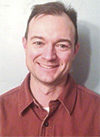So why do we have access to technology in the form of calving-ease bulls and we still calve like we expect every calving to need assistance? Why do we create work by calving in the winter when calves are born with a wet summer coat of hair and not a winter coat? Why do we alter our herd’s environment to the point that we are now cowsitters? Why do we keep cows that create more work for us? Two reasons:
- We’ve always done it that way.
- Everyone else does it that way.
At the root of both reasons is the word “fear.” When it all boils down, most will take a known negative over an unknown outcome. What if we try something new and fail? We calculate financial risks very well, so it’s not a financial consideration that keeps us from trying something new. It’s the fear of failure and what others will think. Why am I thinking of these things now as I write?
We just started calving full force within the last two weeks. And a lot of folks have looked at us like we are green skinned aliens when they find out we are some of those “late calving people.” But you know what? When they are calving in the mud and the cold, we aren’t fighting that battle. We have decided to take full advantage of technology in the form of easy-calving bulls and industrious cows, our management ability and nature’s weather cycles. When we bit that bullet, and were willing to go against the norm of the industry, several things happened.
- We didn’t have to feed hay all winter and now get by on grass and protein blocks. That translates to a weekly supplementation instead of a daily feeding. Money is saved on feed, fuel, equipment and time.
- We haven’t had a single sick calf because we are calving on clean, dry ground with lots of natural shelter and temperatures are more conducive to calving in May than January. The downside to this is that I don’t get to rope and doctor as many calves as I used to, so my horses aren’t as tuned as they used to be.
- We haven’t had any problems with cows or first-calf heifers getting confused about whose calf is whose because they have enough space to go off on their own and calve without the whole herd coming to check out what they are doing like they would when calving in a dry lot or a barn. If there is a downside to this, it might be not having to pen pairs up, suckle them, pack feed and water to their pen, and clean their pen. As a result of not having to do those chores anymore, I don’t get near the exercise I used to.
- The stress level went down and the feed, labor and time input went down along with it.
We aren’t encouraging poor animal husbandry. We take care of situations that arise, though they are fewer and farther between nowadays. Our stock has every resource they need in the form of grass, protein (winter time), mineral, water, natural shelter and vaccine. If they are industrious and take advantage of their resources, they seem to stay fat, healthy and fertile.

We will certainly have cows fall out of the herd due to them having a less industrious mind-set and insist on free food being brought to them, health care and child care (no, that was not intended to be a slam against entitlement-minded democrats for those of you with a tendency to make everything political), but that doesn’t mean it’s a get tough or die scenario. To be an ethical operator we must balance the need to push a cow to her full genetic potential with meeting her needs if she isn’t thrifty enough to stay in the herd. This means we treat the sick, peel out the thin and flesh them back up, and help with a calving issue that we happen across so the animal is cared for and we can go to a new home in good shape.
Remember this: It’s never a bad time to get rid of an undesirable cow and there’s never a wrong time to analyze your production model and question why you do what you do. ![]()

-
Billy Whitehurst
- Owner
- Makale Livestock
- Whitehall, Montana
- Email Billy Whitehurst
PHOTO 1: Occasionally we still have to treat a sick one, but they are fewer and farther between once we started culling harder.
PHOTO 2: These mothers and their calves seem to be getting along quite well calving in the open without us there to get in the way and “take better care of them.” Photos provided by Billy Whitehurst.










